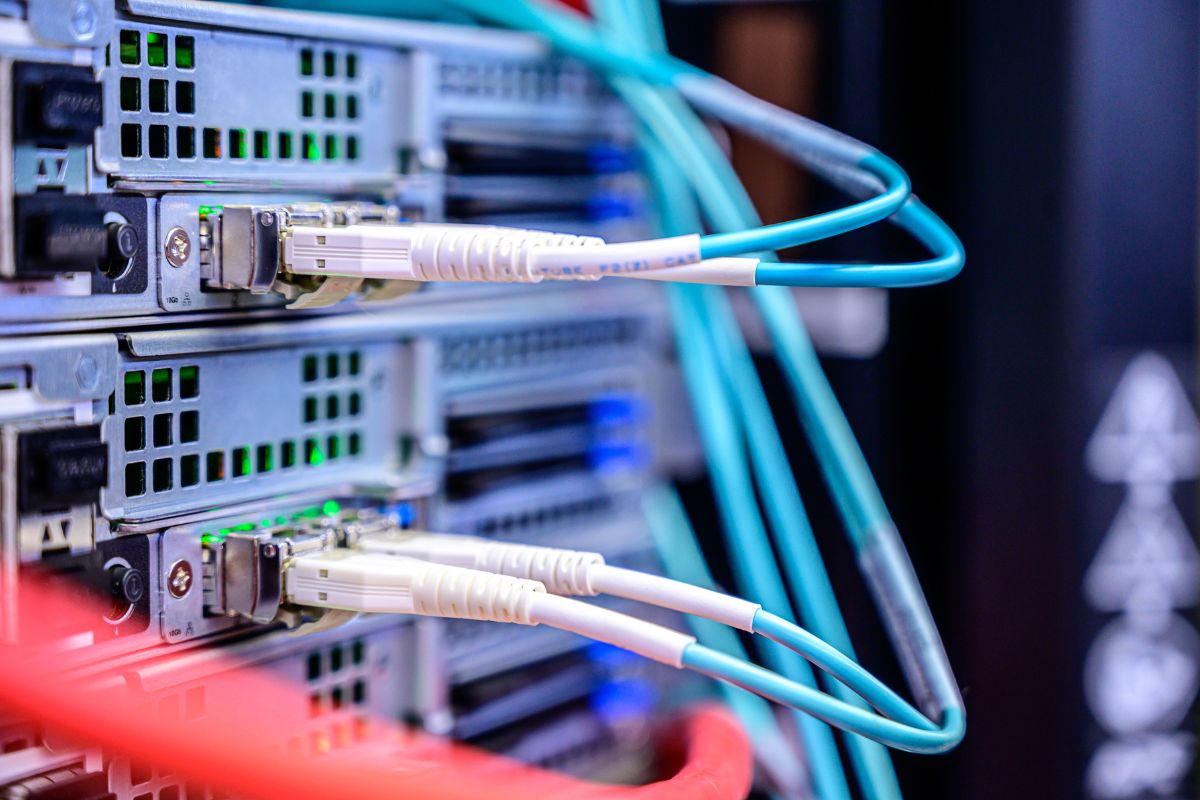
Understanding Different Types Of Data Cables And Their Uses
In today’s fast-paced office environments, reliable data connections are more crucial than ever. From seamless communication to quick file transfers and smooth collaboration, the backbone of every efficient workspace is a solid network of data cables. Whether you’re setting up a server room, optimising your office’s network, or upgrading your IT infrastructure, choosing the right cables is key to ensuring smooth operations.
With so many options available, it can be tricky to know which cables are best suited for your office’s needs. In this blog, we’ll break down the different types of data cables used for servers and office networks, helping you make informed decisions that will keep your business running at its best. Let’s dive in and make your office connectivity stronger than ever!
Types of Data Cables for Server Setup in Office Environments
When setting up a server or a networked environment in an office, selecting the right type of data cables is crucial for maintaining efficient, secure, and high-speed connections. Different cables serve specific purposes depending on the function, distance, speed, and data requirements of the server and network infrastructure. Below is a detailed explanation of the most commonly used data cables for servers:
1. Ethernet Cables (RJ45)
- Types: Cat5e, Cat6, Cat6a, Cat7, Cat8
- Function: Ethernet cables are the primary cables used for networking in server environments. They connect servers to routers, switches, and other networking equipment, enabling communication within the Local Area Network (LAN) or the broader internet.
- Cat5e: Supports speeds up to 1 Gbps (Gigabit Ethernet), typically used in smaller offices or networks with moderate speed requirements.
- Cat6: Supports speeds up to 10 Gbps over short distances (up to 55 meters), ideal for medium to large offices needing faster speeds.
- Cat6a: A more advanced version of Cat6, supporting 10 Gbps speeds at distances up to 100 meters, commonly used for high-performance office networks.
- Cat7: Offers up to 10 Gbps speeds, with improved shielding for better protection against interference, suitable for high-demand server environments.
- Cat8: Designed for very high-speed data transmission (up to 25 or 40 Gbps) and is typically used in data centers or server rooms for the backbone of large networks.
- Common Use Case: Ethernet cables are most commonly used to establish the connection between servers, workstations, and network devices such as switches, routers, or access points. The higher the category, the better the performance and reliability of the network.
2. Fiber Optic Cables
- Types: Single-mode and Multi-mode
- Function: Fiber optic cables use light to transmit data, providing incredibly fast speeds and high bandwidth over long distances. They are typically used to interconnect different parts of a network infrastructure, especially when the distance between devices or buildings is significant.
- Single-mode fiber (SMF): Designed for long-distance communication, as the light travels in a single mode, reducing signal loss over long distances. It’s used for high-speed, long-range connections in large offices or campus networks.
- Multi-mode fiber (MMF): Used for shorter distances (within buildings or between nearby buildings), with light traveling in multiple paths. It offers higher bandwidth over shorter distances but at a lower overall speed compared to single-mode fiber.
- Common Use Case: Fiber optic cables are ideal for connecting servers within a data center or server room and for creating high-speed links between different offices or branches of a business. They are used for backbone infrastructure in larger networks, where long-distance, high-speed data transmission is necessary.
3. SATA (Serial Advanced Technology Attachment) Cables
- Function: SATA cables are used to connect storage devices, such as hard drives or solid-state drives (SSDs), to the motherboard or other storage controllers in a server. While not used for networking, SATA cables are essential for data storage in servers, where large volumes of data are processed and accessed regularly.
- SATA III: The latest version, supporting speeds up to 6 Gbps, commonly used for connecting internal drives in modern servers.
- Common Use Case: SATA cables are used to connect storage devices like hard drives, SSDs, and RAID (Redundant Array of Independent Disks) arrays to servers, enabling data access and storage management.
4. Power Cables (PDU Cables)
- Function: Power cables are essential for supplying electricity to servers and network equipment. While not considered a “data” cable, they are critical to maintaining uptime and reliable operation in a server environment.
- Power Distribution Units (PDUs) are often used in server rooms and data centers to manage the power supply to multiple servers and devices.
- Common Use Case: Power cables connect servers to PDUs, UPS (uninterruptible power supplies), and other power sources, ensuring that all devices in a server setup remain powered. In data centers, they are also used to ensure backup power in case of outages.
5. USB Cables
- Function: USB cables are typically used to connect peripherals, such as printers, external storage devices, or input devices (keyboards and mice) to servers. USB also serves as a connection for firmware updates, system maintenance, or transferring files between systems.
- USB 3.0/3.1/3.2: High-speed data transfer rates of up to 5 Gbps or more, allowing for faster backup, system updates, or connecting external drives to a server.
- USB-C: The latest USB standard, capable of delivering both high-speed data transfer and power, often used for server peripherals.
- Common Use Case: While not as common for direct server-to-server communication, USB cables are useful for connecting external devices like storage drives, printers, or for performing system management tasks.
6. Thunderbolt Cables
- Function: Thunderbolt cables offer extremely high-speed data transfer, often used in environments where large amounts of data need to be transferred quickly. Although more commonly found in personal devices like laptops, Thunderbolt is sometimes used in server environments where ultra-fast data access is critical, such as high-performance computing tasks or connecting external high-capacity storage devices.
- Thunderbolt 3: Supports data speeds of up to 40 Gbps and can also provide power and video output through the same cable.
- Common Use Case: Thunderbolt cables are less common in traditional office server setups but can be used in environments requiring rapid data transfer, such as connecting servers to high-speed external storage solutions or performing data-heavy tasks like video editing or scientific simulations.
7. Coaxial Cables
- Function: Coaxial cables were once more commonly used for networking and broadband connections. While they are now largely replaced by Ethernet cables in most modern office setups, they may still be used in some legacy or specialised server configurations, especially in older systems or specific applications that require coaxial networking.
- Common Use Case: Coaxial cables might still be found in older server environments, especially for connecting to cable broadband or certain network setups like DSL or cable modems in legacy office networks.
Benefits of the Best Data Cabling for Your Server
Choosing the best data cabling for your server setup is essential for ensuring optimal performance, reliability, and scalability in your office network. High-quality cables not only enhance speed but also future-proof your infrastructure, supporting your business as it grows and evolves.
1. Improved Performance and Speed
High-quality data cabling, such as Cat6 or fiber optic cables, ensures faster data transfer speeds, reducing latency and enhancing server performance. This is crucial for running applications, accessing databases, and ensuring smooth communication across the network. Faster speeds result in quicker data access and a more efficient user experience for everyone in the organisation.
2. Increased Reliability
Reliable cabling reduces the risk of network downtime caused by poor connections or interference. High-quality cables, like shielded Ethernet or fiber optic, are designed to minimise signal loss, ensuring stable connections between your server and other devices on the network. Consistent connectivity ensures that your server operations remain uninterrupted, avoiding costly delays in business processes.
3. Future-Proofing Your Network
Investing in top-tier cabling ensures that your network can handle future demands. For instance, fiber optic cables or higher-grade Ethernet cables (e.g., Cat6a or Cat7) support faster speeds and higher bandwidth, making it easier to upgrade your system as your business grows and needs evolve. By installing advanced cables now, you avoid frequent upgrades, saving both time and money in the long run.
4. Enhanced Security
Premium data cabling helps protect against unauthorised access and interference. For example, shielded cables (STP or FTP) offer additional protection against electromagnetic interference (EMI) or signal jamming, improving the security of your data transmission. A more secure network helps safeguard sensitive business information from cyber threats, preventing data breaches or leaks.
5. Reduced Maintenance Costs
High-quality cables are built to last, reducing the frequency of replacements or repairs. This helps to lower overall maintenance costs, ensuring that your server room runs smoothly without the need for frequent troubleshooting caused by faulty cables. Durable cables also minimise the risk of downtime due to hardware failure, saving your business time and resources.
6. Better Scalability
The best data cabling systems support the expansion of your server network. They can handle higher volumes of data and more devices, making it easier to scale up your infrastructure without compromising performance. As your company grows, you can expand your network without worrying about performance bottlenecks, ensuring your technology can keep up with increasing demand.
7. Efficient Power Consumption
Certain high-quality cables, such as those with low resistance, can help reduce power loss, improving energy efficiency. This is particularly beneficial for server rooms, where minimising power usage is essential for cost-saving and sustainability. Lower energy consumption translates into reduced operating costs and a greener, more environmentally responsible infrastructure.
8. Enhanced Data Integrity
Using high-quality cabling, such as fiber optics, helps ensure that data is transmitted with minimal errors or degradation, maintaining data integrity and preventing potential issues during data processing or transfer. This is especially important in mission-critical applications, where even minor data loss or corruption can lead to significant operational problems or financial loss.
9. Improved Network Capacity
The right cabling allows for better bandwidth capacity, supporting more users, devices, and data-heavy applications without bottlenecks. This is especially important in environments where servers handle large volumes of traffic, such as in data centers or cloud-based services. With improved capacity, your network can handle more traffic without slowing down, ensuring smooth operations even during peak usage times.
10. Reduced Downtime
Proper installation of the best cables minimises the risk of network failures or slowdowns, leading to less downtime. This ensures that your servers are consistently operational, supporting business continuity and productivity. Reducing downtime is crucial for maintaining customer satisfaction and ensuring that critical systems are always available when needed.
Why Choose IT Support Guy For Data Cabling in Sydney
Choosing IT Support Guy for data cabling in Sydney ensures your business receives top-tier, reliable, and efficient solutions tailored to your specific needs. With years of experience and expertise in designing, installing, and maintaining high-quality cabling systems, they provide the best in Ethernet, fiber optic, and other advanced data cabling in Sydney. Their team is committed to ensuring seamless connectivity, faster speeds, and minimal downtime, while also offering future-proof solutions to accommodate your growing business. Trust IT Support Guy for professional, hassle-free installations and ongoing support to keep your network running smoothly and securely.
Conclusion
In conclusion, selecting the right data cabling for your server setup is crucial for maintaining a fast, reliable, and secure network in your office. Whether you’re upgrading your existing infrastructure or setting up a new system, investing in high-quality cables like Ethernet, fiber optics, or specialised connections ensures better performance, future scalability, and minimised downtime. With the right cabling in place, your servers will operate more efficiently, supporting your business growth and technological needs. By partnering with experts like IT Support Guy for your data cabling needs in Sydney, you can ensure that your network remains robust, secure, and ready for the future.
